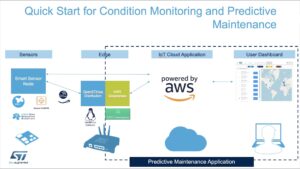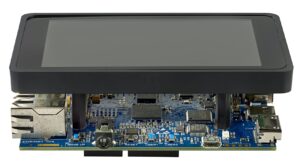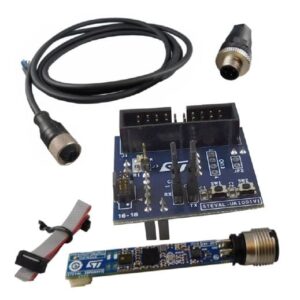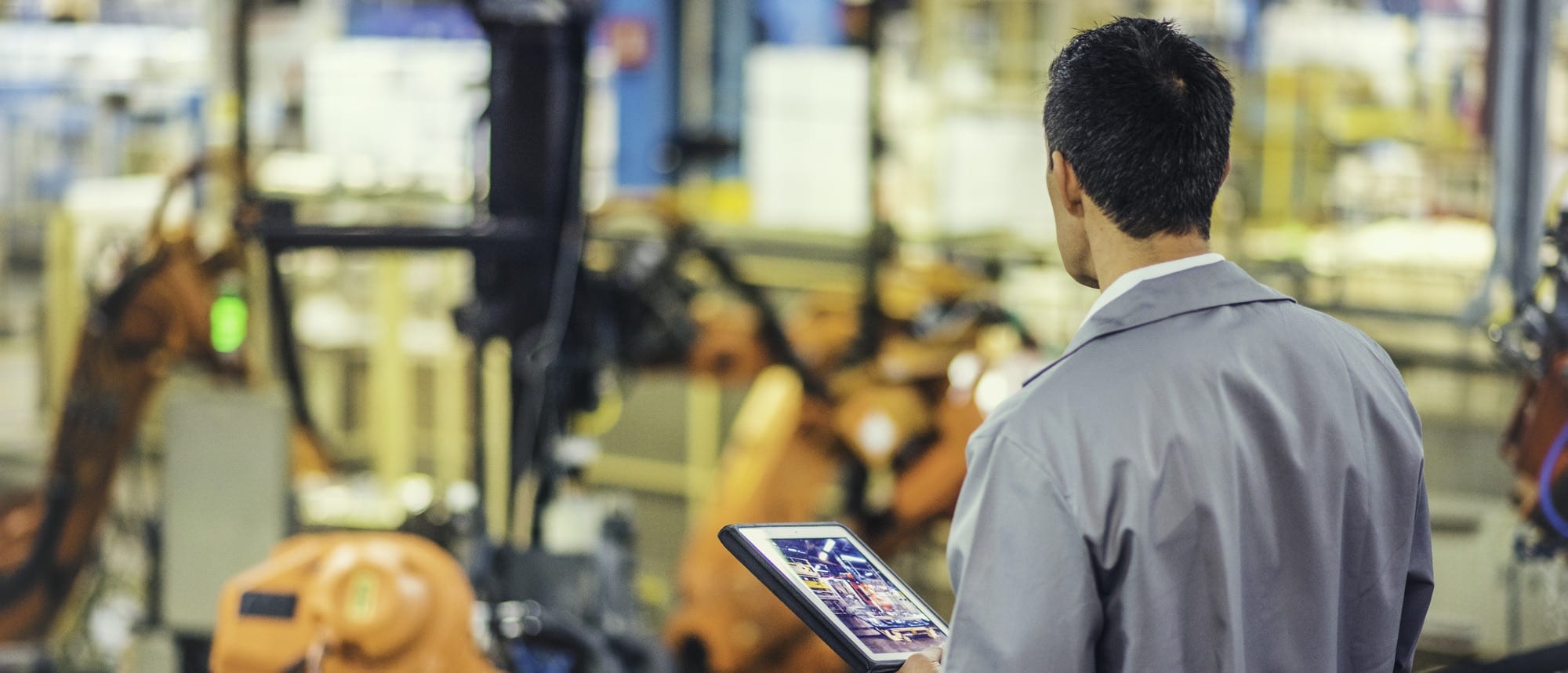ST will take part in the AWS re:Invent 2019 conference during the first week of December and show how our solutions and Amazon Web Services can come together to create powerful as well as cost-effective platforms for conditioning monitoring and predictive maintenance. The days of expensive or arcane gateways are long gone, and we show how AWS IoT Greengrass can run on an STM32MP1 Discovery Kit. Additionally, our predictive maintenance kit (STEVAL-BFA001V1B) or our STM32L4 Discovery kit IoT node (B-L475E-IOT01A) can collect data and even perform some computations before connecting to the cloud. We also offer a companion dashboard (DSH-PREDMNT) built on AWS services to facilitate the overall setup, shorten development times, and help teams go from thinking about predictive maintenance to executing a comprehensive and sensible implementation.
Scholars showed almost two decades ago1 the positive impact of proactive maintenance on a plant’s equipment. Unlike reactive maintenance, which deals with problems as they arise, proactive maintenance improves product quality and costs. It also offers the highest equipment availability compared to aggressive maintenance strategies that take machines offline a lot more often, sometimes even if there are no signs of upcoming failures. There are many proactive maintenance strategies, but we will focus on two of them, condition monitoring and predictive maintenance since engineers can implement both using our predictive maintenance kit, or our Discovery kit IoT node.
Proactive Maintenance: Understanding Condition Monitoring and Predictive Maintenance

Condition monitoring tracks the working conditions of equipment, such as the vibrations coming out of a fan. Engineers characterize a normal behavior, and the system throws an alert if sensors detect abnormal values. Very often, the machine is still functioning, but condition monitoring helps anticipate an upcoming failure. Teams can more efficiently plan maintenance operations. They won’t have to take a machine offline at the whims of an arbitrary schedule, and it can also tweak a system before it breaks down and severely hinders production. Predictive maintenance goes a step further by offering a more complex data analysis system through the use of a neural network trained to more accurately forecast issues instead of just relying on thresholds. The inference can take place on the gateway, on the sensor board, or even on the sensor itself if the latter embarks a decision tree.
One of the biggest challenges that a company faces when implementing proactive maintenance strategies is finding a solution that can easily retrofit existing machines. The STEVAL-BFA001V1B sensor node can monitor current equipment and process critical vibration data locally since it can output frequency and time domain data, as well as information on the temperature, pressure, and humidity. The development board thus offers one of the most straightforward paths to a proof of concept. Similarly, if engineers have a trained neural network available, they can rapidly move into predictive maintenance thanks to STM32Cube.AI, which converts a neural network into STM32 code. Being able to run inferences on an embedded system efficiently makes its integration within a plant a lot easier. Let’s, therefore, look at how teams can use ST and AWS tools to make proactive maintenance a lot more ubiquitous.
Predictive Maintenance: An Intuitive and Cost-Effective STM32MP1 Gateway With AWS IoT Greengrass

Coming up with a proof of concept starts by understanding the potential of a cloud-based solution. For instance, the STM32MP157C-DK2 (AWS Partner Device Catalog) can act as a gateway that can run AWS IoT Greengrass to connect to AWS services and use our predictive maintenance dashboard application to plot condition monitoring sensor data and configure triggers. Using the cloud doesn’t mean that everything falls if the Internet connection crashes. AWS IoT Greengrass can simulate a cloud to keep the platform functional until the system is back online. It can even process data locally, run updates, or take some actions instead of entirely relying on the Internet. Using an STM32MP1 gateway and AWS is thus about making more devices smarter and reliable to ensure that both condition monitoring and predictive maintenance solutions are more robust and flexible.
Until recently, gateways to the cloud often required expensive and powerful machines with hypervisors or complex administration requirements. Installing AWS IoT Greengrass on an STM32MP1 is as straightforward as our tutorial on our STM32 MPU Wiki. Once the system is in place, developers can write code in the cloud and deploy it remotely to increase their productivity. The small size of the STM32MP1 Discovery kit means it’s a lot simpler to test a proof of concept in real-world settings. Moreover, the fact that the STM32MP1 integrates two Cortex-A7 means that it runs our OpenSTLinux distribution, which offers various package options. Engineers looking to build a test platform quickly will gravitate toward the starter package while the developers working on the final version of the software will use the distribution package to customize the operating system massively.
Predictive Maintenance: A Flexible Edge With Amazon FreeRTOS and IO-Link

As engineers evaluate their proof of concept, one of their first challenges is to connect the sensors nodes and the gateway. Wired connections offer a high level of security and make snooping attacks a lot harder. Wireless technologies can make it easier to retrofit a solution onto older machines and to link assets that are far from one another. Using IO-Link is simpler than teams often expect, and there are IO-Link to serial adapters to connect to gateways, such as our STM32MP1 Discovery board. When using IO-Link, data from up to four sensor node transceivers can route their stream through an IO-Link master to a gateway that will consolidate the information before the cloud processes it.
Companies looking for wireless solutions can use our STM32L4 Discovery kit IoT node (AWS Partner Device Catalog), as an example of a wireless smart sensor node, to talk to AWS using Amazon FreeRTOS and connect to AWS IoT Core or AWS IoT Greengrass on the STM32MP1 gateway to receive updates or relay information. Multiple wireless smart sensor nodes can either send their results to the gateway or immediately transmit them to the cloud.
We also offer libraries to help programmers take advantage of the MCU present on their sensor node to perform a fast Fourier transform or sensor fusion computations. It can be valuable for engineers looking to reduce the amount of data transmitted to the cloud or use the available computational power to process information quicker. Hence, we see that developers not only have the boards, firmware, and tools at their disposal to start implementing condition monitoring or predictive maintenance in their plants, they also have the flexibility to adapt it to their particular use cases.
To Go Further
- Laura Swanson, “Linking maintenance strategies to performance,”International Journal of Production Economics, Volume 70, Issue 3, 2001, Pages 237-244, ISSN 0925-5273, https://doi.org/10.1016/S0925-5273(00)00067-0. ↩
